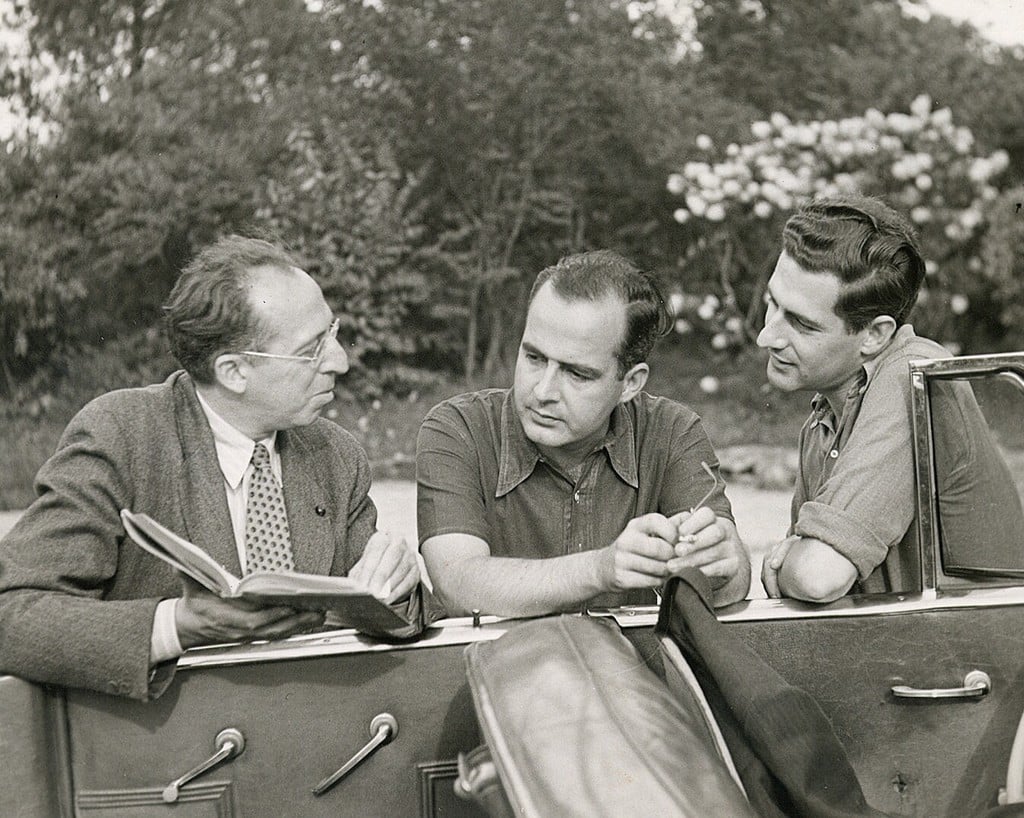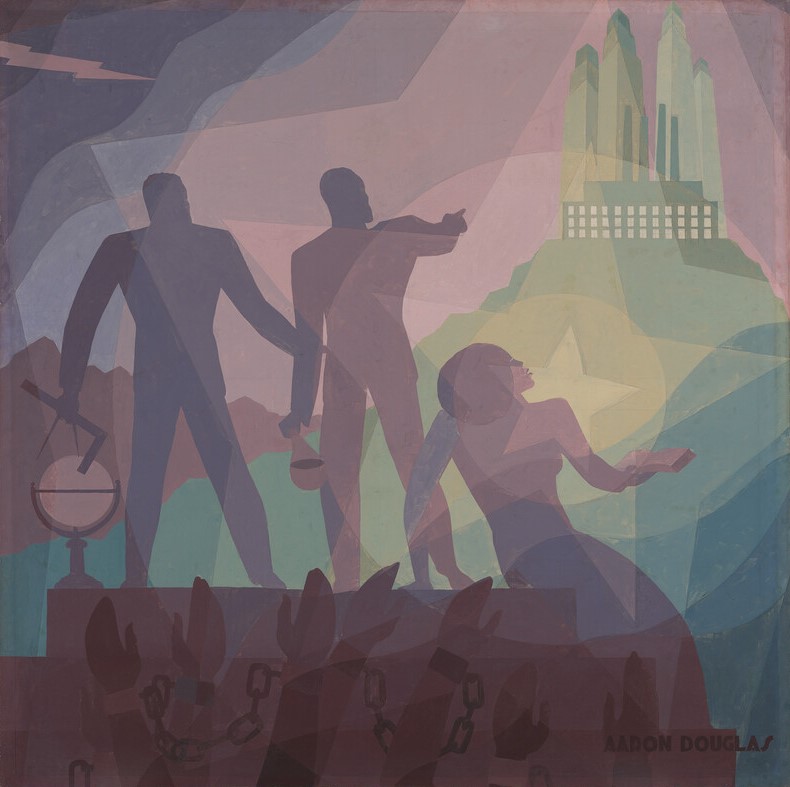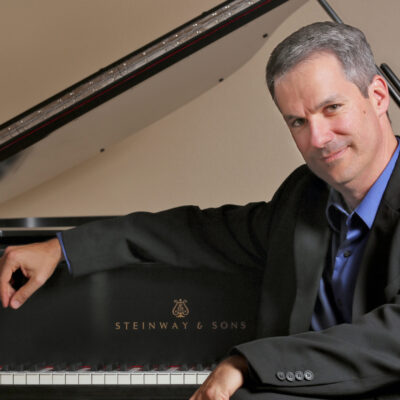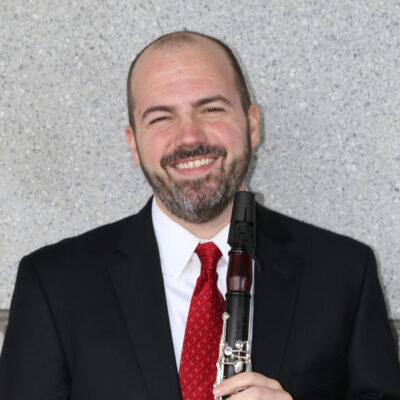
Samuel Barber (1910–1981)
Symphony No. 1, in One Movement, Op. 9 (1936, rev. 1942)
It must have been lonely to be Samuel Barber there for a while. Almost alone of mid-twentieth-century American composers he eschewed the era’s prevailing bleak modernism in favor of a rich musical language that emphasized melody, opulent harmonies, and traditional structures. The critics weren’t always kind. Neither were the cerebral types who signed on to conductor-composer Pierre Boulez’s dictat that musicians not riding the ultra-modernist bandwagon were “irrelevant.”

Performers and audiences thought differently. Barber’s art songs were popular with singers and listeners alike, while many of his instrumental works were quickly elevated to bedrock repertory. Even if his massive 1966 opera Anthony and Cleopatra bombed, his earlier Vanessa scored a solid international hit. And he has been vindicated, and then some, by the judgment of posterity. Barber’s music gets played, heard, studied, discussed, and enjoyed. It was those academic modernists who turned out to be irrelevant. They don’t get played much.
A presiding angel hovers over Barber’s one-movement Symphony No. 1: Finnish master Jean Sibelius, whose seventh symphony compresses the traditional four movements into one. But if Sibelius carved his symphony from ice, Barber etched his with fire. Neither atonal à la Boulez nor folksy à la Copland, the Barber First emits an aura of powerful substance from its very first gestures—grandly-hewn materials that will wind up forming the basis of what follows. Throughout its tapestry of themes and statements, the symphony creates a weave of deeply moving lyricism, heroic grandeur, and bristling athleticism. It packs a tremendous amount of emotional energy into its twenty some-odd minutes.
We are blessed with a splendid premiere recording from 1945, brilliantly performed by the New York Philharmonic under legendary conductor Bruno Walter, a rendition that reflects Barber’s 1942 revisions to his 1936 original. Numerous performances and recordings, from orchestras far and wide, have followed. (There’s even a recording from Slovenia.) Barber gets played, after all.
George Gershwin (1898–1937)
Rhapsody in Blue (1924; re-interpretation by Marcus Roberts 1996)
Rhapsody in Blue is many things to many people: jazz age anthem, pops favorite, landmark American composition, even airline theme song. But one thing it is not: a set-in-stone, unchanged and unchangeable entity. It was still a work-in-progress as of its premiere in Paul Whiteman’s now-legendary 1924 concert in New York’s Aeolian Hall; Gershwin quasi-improvised the piano solo passages, since he hadn’t written them down fully yet. A recording by Gershwin and Whiteman from the summer of 1924—a streamlined version whittled down to fit two sides of a 78 RPM record—that demonstrates that the piano solo passages still weren’t completely finalized. Nor did the instrumentation match that which would eventually prevail in concert halls; Gershwin had relied on Whiteman house arranger Ferde Grofé to provide a setting for a jazz-band ensemble. Grofé’s full symphonic version came along later.
The upshot is that Rhapsody in Blue is anything but preserved in amber. It has continued to evolve and grow since its inception, so it shouldn’t be particularly surprising that, upon its entry into the public domain as of January 1, 2020, intrepid musicians have continued to mine its riches and explore its many possibilities. Even before then, jazz pianist Marcus Roberts took the lead in 1996 with a boldly innovative re-interpretation that preserves the overall structure and themes of the original, while allowing for any number of extrapolations and inventions. It’s not the Rhapsody as Gershwin knew it, to be sure—but one can’t help but wonder if he might have been thrilled if he could have been around to hear it.
William Dawson (1899–1990)
Negro Folk Symphony (1934, rev. 1952)

It should have made him a star. His new symphony was given its 1934 premiere by no less than the Philadelphia Orchestra, with Leopold Stokowski conducting, in Carnegie Hall. It knocked the audience’s collective socks off. They even interrupted it for a special round of applause after the second movement. One of Stokowski’s four performances was broadcast on CBS radio. The critics fell all over themselves praising the new work and its author. Such a triumph should have catapulted its young composer, up to then best known for his choral arrangements of spirituals, into Gershwin or Copland altitude.
But no. William Dawson’s spectacular Negro Folk Symphony received a few more performances and then vanished into the Bardo of forgotten works. It’s difficult at this late date to analyze with any precision just what went wrong, but certainly the Depression had a lot to do with it. A properly typeset edition was out of the question in those money-strapped days, so a few copies of the conductor’s score and a set of handwritten parts were all that were available. (No photocopiers back then, alas.) The performing materials being more or less inaccessible, the symphony faded into obscurity, and Dawson never wrote another one. Leopold Stokowski kept the flame flickering (barely) by recording Dawson’s revised version in 1963. Happily, re-ignited interest has brought about a posthumous second act for this remarkable composition, with a flurry of performances complemented by at least five new recordings over the past two decades.
Intended to be “symbolic of the link uniting Africa and her rich heritage with her descendants in America,” as Dawson explained in his own program note, the three-movement symphony incorporates a rich bounty of spirituals, but not as mere quotations. Instead, Dawson examines, re-examines, and reworks his materials into a vibrant tapestry. Each movement carries its own evocative title. “The Bond of Africa” makes spectacular use of a horn solo that helps to bind the materials together, while the deeply moving central movement “Hope in the Night” highlights the English horn in a similar manner. Then comes the exhilarating and rhythmically complex “Oh, Le’ Me Shine, Shine Like a Morning Star!” that brings the work to its joyous close.
Program Annotator Scott Foglesong is the Chair of Musicianship and Music Theory at the San Francisco Conservatory of Music, and a Contributing Writer and Lecturer for the San Francisco Symphony. He also leads the California Symphony’s ground-breaking music education course for adults Fresh Look: The Symphony Exposed.
The 23-24 TRAILBLAZERS Season continues with GERSHWIN IN NEW YORK, on Saturday, January 27 at 7:30 p.m. and Sunday, January 28 at 4 p.m. at the Lesher Center for the Arts in Walnut Creek. Tickets are $45 to $90 and $20 for students 25 and under, and include a free 30-minute pre-concert talk starting one hour before the performance. Buy tickets online or call or visit the Lesher Center Ticket Office at 925.943.7469, Wed – Sun, 12:00 noon to 6:00 p.m.



